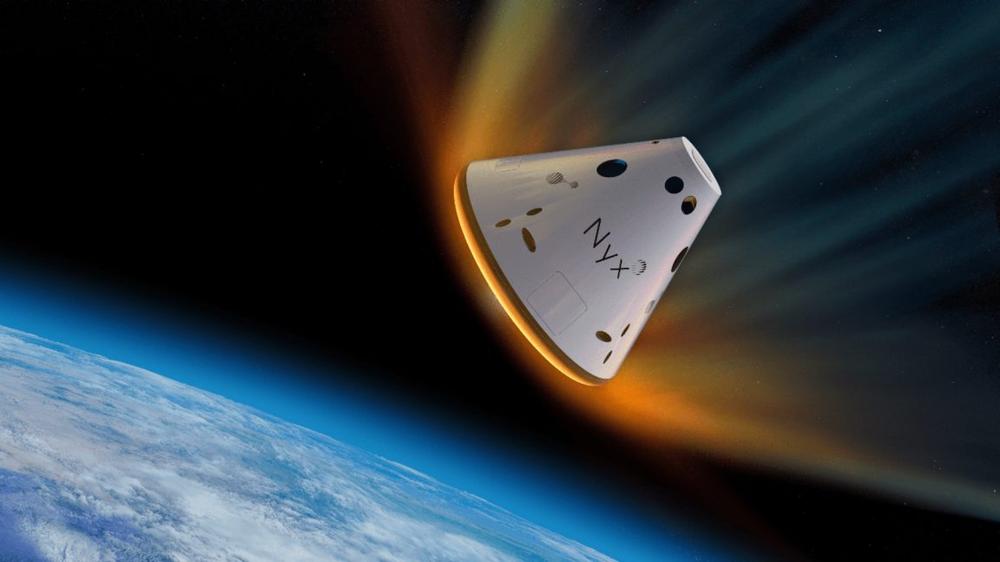Last month, the parachutes on Hélène Huby's small spacecraft failed to deploy, and the vehicle and its cargo crashed into the ocean on Earth.
It was both a success and a failure.
The success was that after Huby founded The Exploration Company in Europe, she managed to move nimbly with the "Mission Possible" spacecraft such that it cost less than $25 million to build and reached space in less than three years. The vehicle ticked off a number of successes in spaceflight before making a controlled descent through the atmosphere.
But at 26 km above the planet, as the spacecraft slowed to Mach one, The Exploration Company lost contact. Huby was not sure how this loss would be received in Europe, where failures in spaceflight have not been traditionally well-tolerated.
"What was interesting is the feedback I got in Europe," Huby said in an interview this week at the company's offices in Houston. "The German Space Agency, the French space agency, the European Space Agency said, OK, that's a great achievement. For the time and money we spent, performing 80 percent of that mission was a good investment."
No drop tests
After the spacecraft was lost on June 24, the company established an independent investigation team. Huby said it is "99 percent" confirmed there was a problem with the deployment of the parachutes, either the drogue chutes or the main parachutes. The fault was not with the provider of the parachutes themselves, US-based Airborne Systems, but the company's mechanism, she said.
To save time and money, The Exploration Company did not conduct any drop tests. Such a campaign would have added millions of dollars to a program that was trying to be lean, plus a year of schedule to a mission attempting to move fast.
"We made a mistake, basically, to underestimate the risks," she said. In retrospect, Huby added, the company could have done more testing on the ground.
Now the firm faces a big decision: How to proceed from here. One option is building another small spacecraft, similar to Mission Possible, for testing purposes. But there is limited commonality in the parachute system for this vehicle and the larger Nyx spacecraft the company is building for operational missions. So if the Mission Possible parachutes were to work, that would not guarantee success for Nyx.
An aggressive plan
This larger spacecraft is quite ambitious. It is similar in size to SpaceX's Dragon spacecraft, perhaps even a bit bigger. The initial version is intended to fly cargo into low-Earth orbit. Huby said the vehicle is being designed with crew in mind, however. For example, the initial version will use four parachutes, which is overkill for cargo but necessary for astronauts.
One reason Huby was in the United States this week was to work with NASA on requirements. That's because the company aspires to fly Nyx to the International Space Station as early as 2028, two years before the orbiting laboratory is due to be retired. At this point, in talking to Huby, the company seems likely to move directly into Nyx development and flying to the space station on its first mission.
"It sounds a little bit aggressive, but the team is working toward 2028," she said of flying Nyx. "That date has been stable now since January. We are in the development phase, so let's see what the date is in two years. But that's our target right now."
A big milestone will come this fall at the European Space Agency's Ministerial Council meeting in November. At that time, member states will make big decisions, and among these, Huby is expecting support for the development of a cargo vehicle. The Exploration Company is looking for at least $200 million in funding, likely as part of a competition. There are signs this will happen, but it will not be decided until the meeting itself in Bremen, Germany.
Crew, too
One thing that has changed in recent months, Huby said, is that there is increasing support in Europe for the development of a crew spacecraft.
"In Europe, there is additional support to go fast to crew," she said. "One year ago, this was out of the discussion. I think this is clearly a consequence of geopolitics."
Those geopolitics, of course, include the election of Donald Trump to a second term as US President and his attitude toward allies in Europe, proposed budget cuts that would end NASA participation in space programs important to Europe, and the fact that the only way European astronauts can get to space today is on board Dragon vehicles built by SpaceX.
So there is a clear lane for a European company to build both cargo and crew spacecraft. Clear though it may be, however, it is a long and difficult technical lane to traverse. Huby and The Exploration Company have their work cut out for them.

 SYM presenta due nuovi scooter 125 per affrontare le sfide della mobilità urbana
SYM presenta due nuovi scooter 125 per affrontare le sfide della mobilità urbana